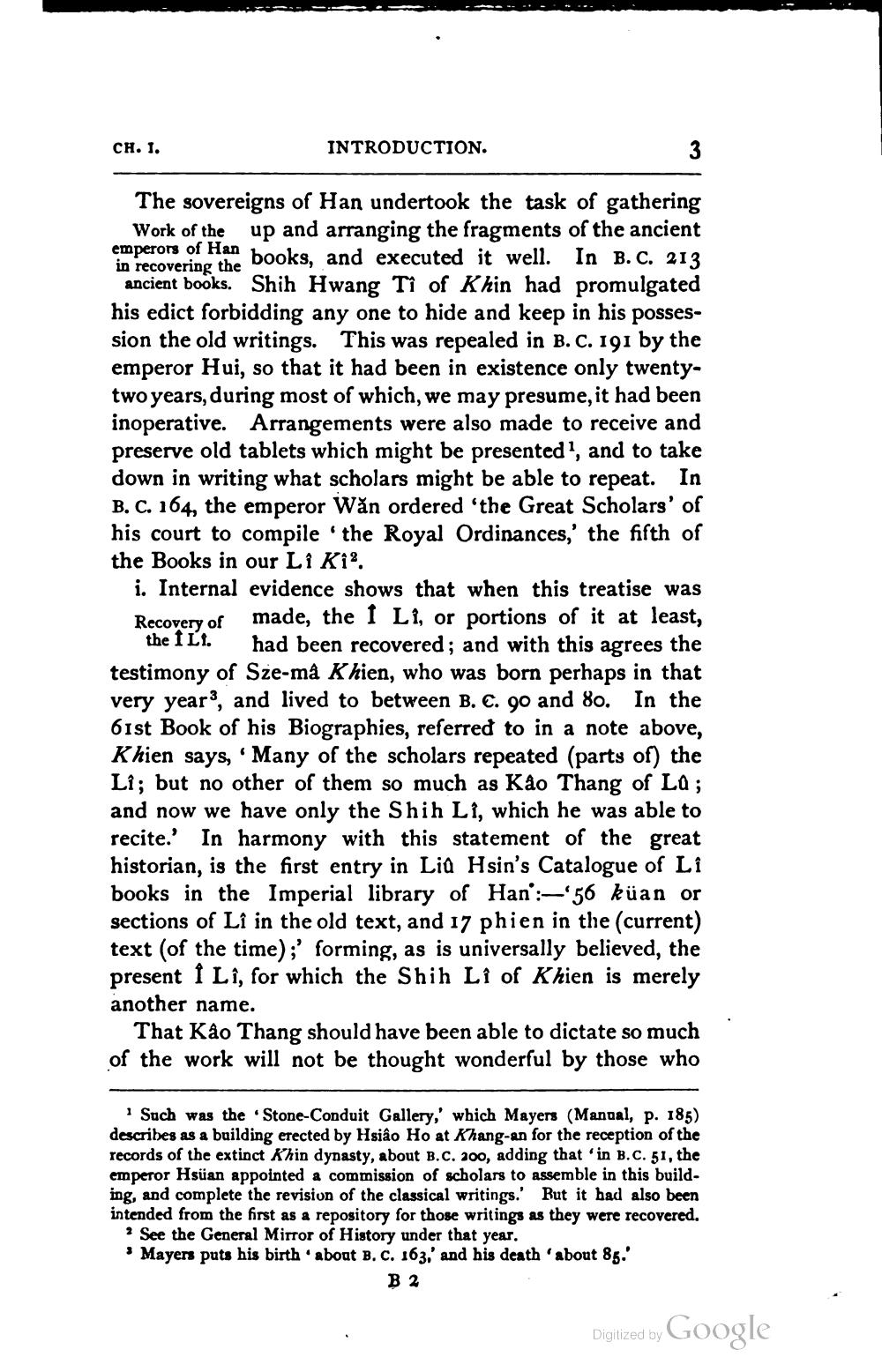________________
CH. 1.
INTRODUCTION.
The sovereigns of Han undertook the task of gathering Work of the up and arranging the fragments of the ancient emperors of Han in recovering the
the books, and executed it well. In B.C. 213 ancient books. Shih Hwang Tî of Khin had promulgated his edict forbidding any one to hide and keep in his possession the old writings. This was repealed in B. C. 191 by the emperor Hui, so that it had been in existence only twentytwo years, during most of which, we may presume, it had been inoperative. Arrangements were also made to receive and preserve old tablets which might be presented', and to take down in writing what scholars might be able to repeat. In B. C. 164, the emperor Wăn ordered 'the Great Scholars' of his court to compile 'the Royal Ordinances,' the fifth of the Books in our Li Kia.
i. Internal evidence shows that when this treatise was Recovery of made, the I Lî, or portions of it at least,
the ILI. had been recovered; and with this agrees the testimony of Sze-mà Khien, who was born perhaps in that very year, and lived to between B. C. 90 and 80. In the 61st Book of his Biographies, referred to in a note above, Khien says, 'Many of the scholars repeated (parts of) the Li; but no other of them so much as Käo Thang of LQ; and now we have only the Shih Li, which he was able to recite.' In harmony with this statement of the great historian, is the first entry in Liu Hsin's Catalogue of Li books in the Imperial library of Han :-56 küan or sections of Lî in the old text, and 17 phien in the (current) text (of the time);' forming, as is universally believed, the present I Lî, for which the Shih Lî of Khien is merely another name.
That Kâo Thang should have been able to dictate so much of the work will not be thought wonderful by those who
Such was the Stone-Conduit Gallery,' which Mayers (Mandal, p. 185) describes as a building erected by Hsiao Ho at Khang-en for the reception of the records of the extinct Khin dynasty, about B.C. 200, adding that 'in B.C. 51, the emperor Hsüan appointed a commission of scholars to assemble in this building, and complete the revision of the classical writings. But it had also been intended from the first as a repository for those writings as they were recovered.
? See the General Mirror of History under that year. • Mayers puts his birth about B.C. 163,' and his death about 85.'
B2
Digitized by Google




